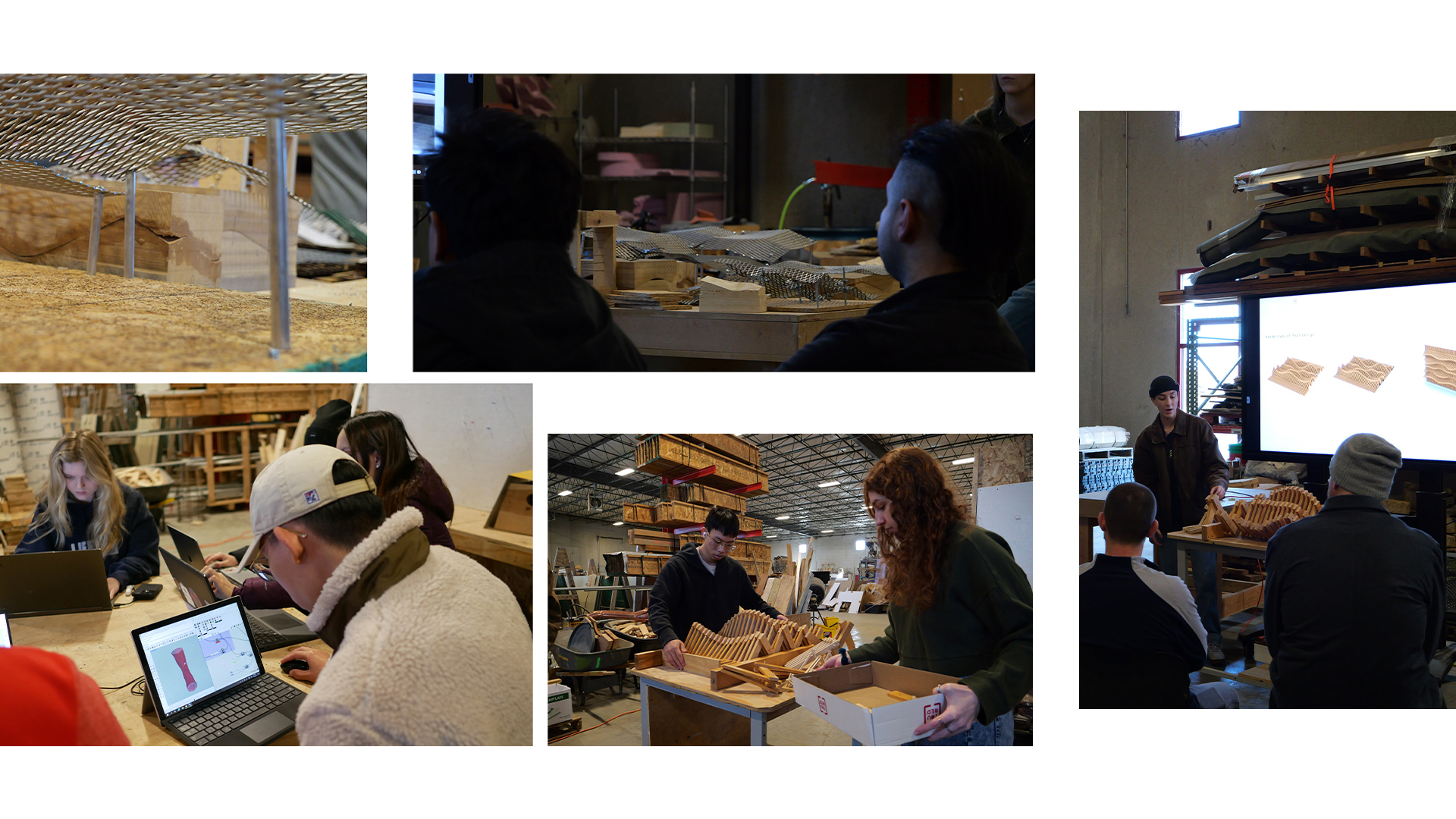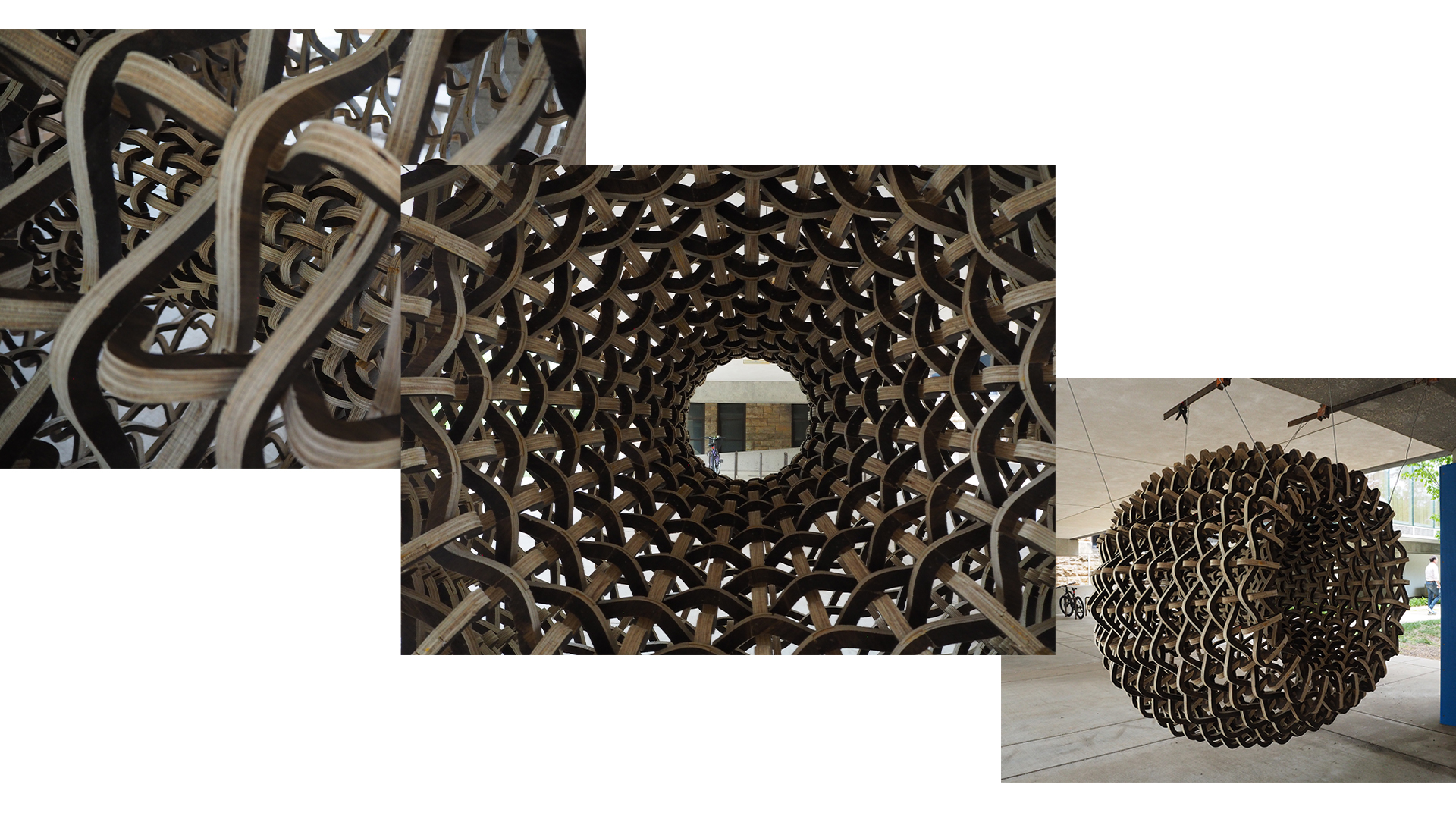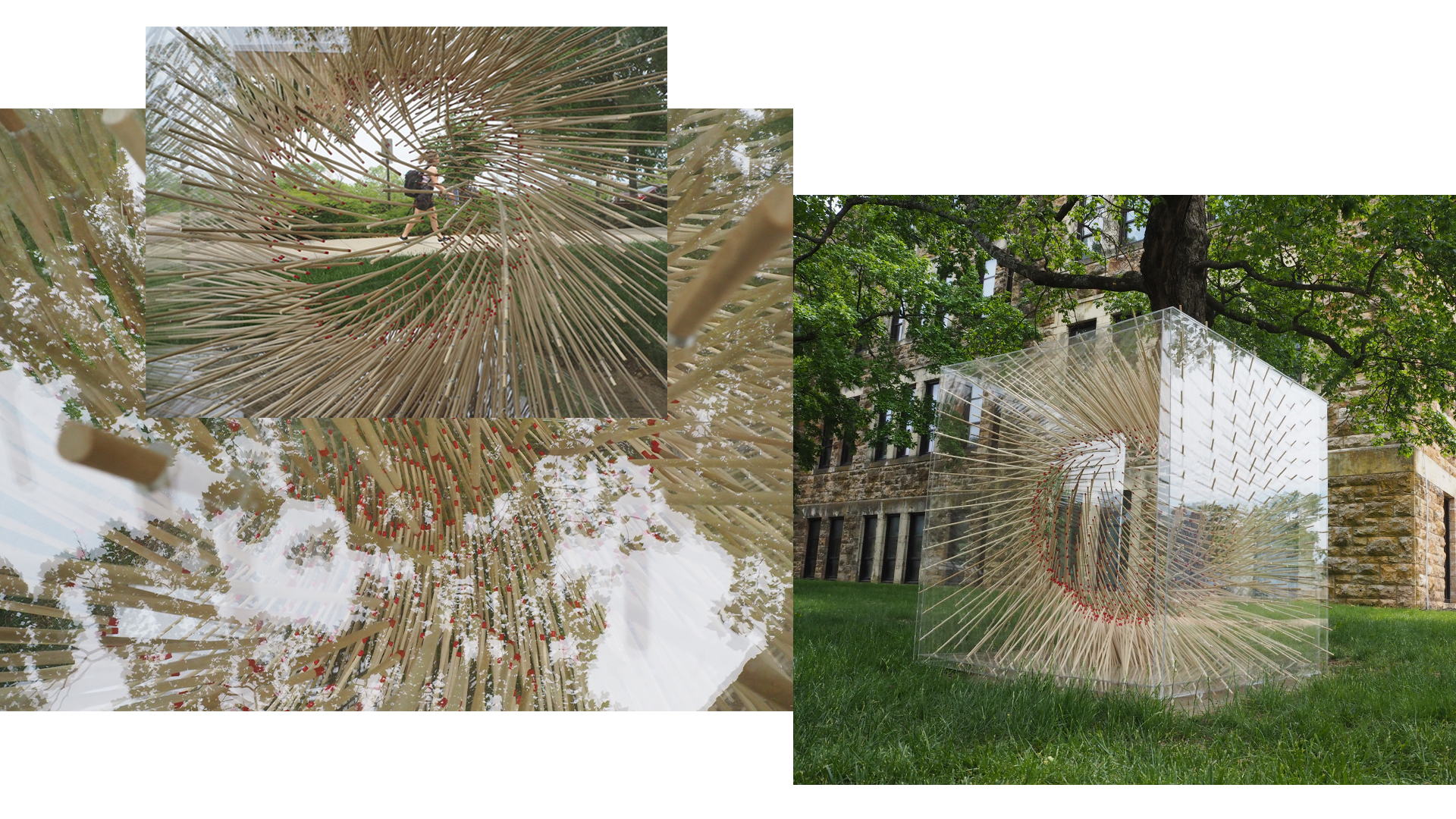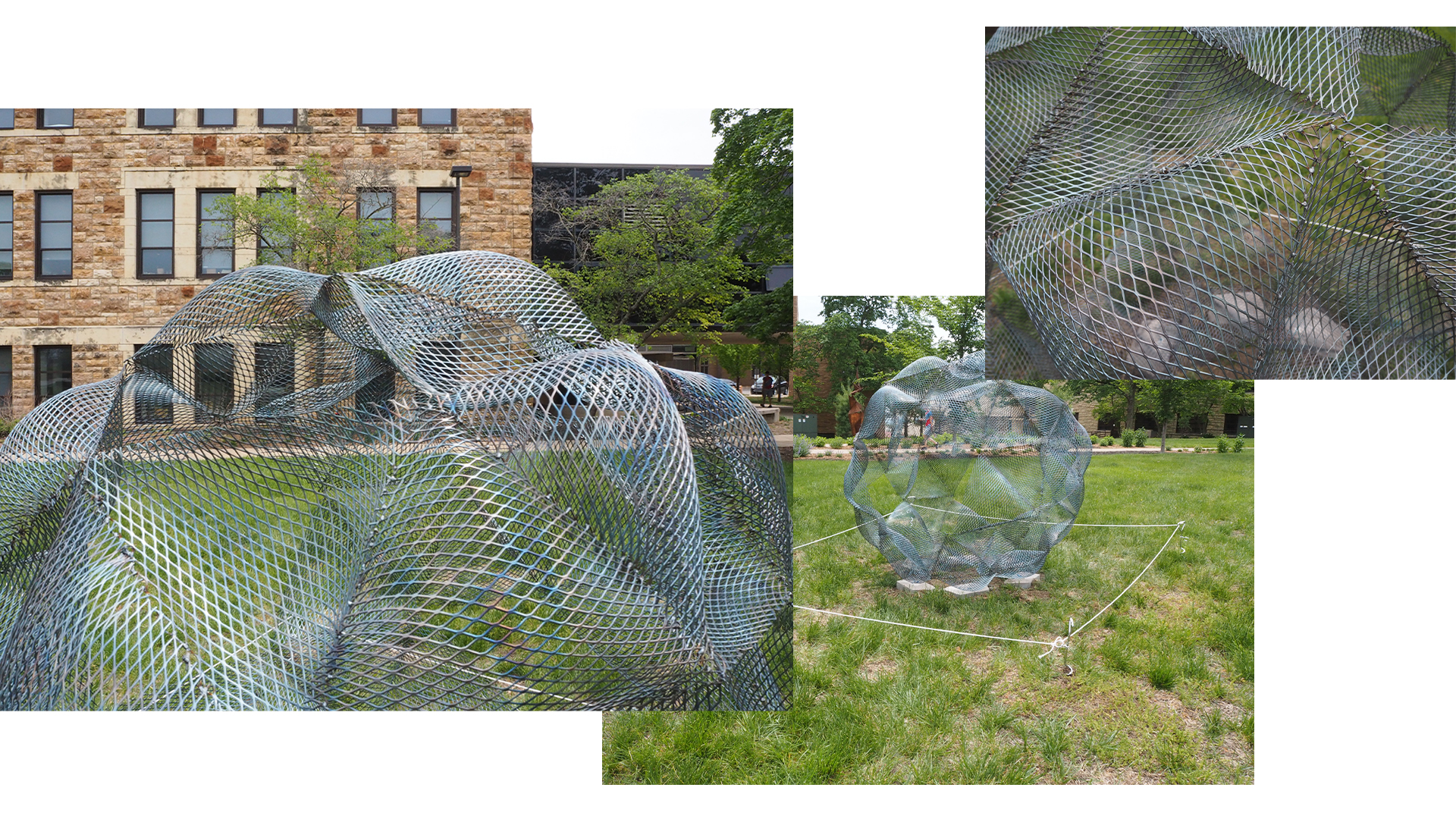Studio Spotlight: Trash, computing, and craft realize sculptural expressions of data in KU Designbuild studio
Constraints create problems but also opportunities. Said in another way, working under constraints reveals new processes, paths, and perspectives that might not otherwise be discovered.
During the spring semester – in a third-year design-build studio led by architecture professor Kurt Hong and practitioners Matthew Hufft and Josh Ogren of Hufft – students were challenged to learn and apply parametric design to discover new applications for materials otherwise destined for the landfill.

To complete the studio’s two-phase project, teams of students were each allowed to utilize a single material type sourced from construction waste, broken furniture, and other discarded items. Working in the School of Architecture & Design’s East Hills Designbuild Center, the teams designed and built at the interface of sophisticated computer modeling and hands-on construction to transform the scrap material into elegantly complex objects.

To construct the first project phase, students digitally fabricated components and hand assembled 4-by-4-foot physical protypes of their designs. The teams placed the constructions in hand-built frames and installed them in the Marvin Hall Commons exhibition space.

Mounted on white gallery walls, each of the prototypes operated as sculptural projections that created evolving interactions of material, light, and shadow. These visually compelling products of hours upon hours of design, computing, testing, and construction revealed data and insights that allowed students to enter the final project phase.
<<>>
For the final phase, the teams applied their research, designs, and repurposed materials to structure. Where the initial prototypes illustrated the potential and limits of the materials by extruding from two dimensions into space, the structural protypes began to further illuminate possible architectural applications by defining space.

The fully three-dimensional constructions, though connected to the framed prototypes by material and design language, are clearly embodied with more data, design sophistication, and depth of craft.

The teams installed their 3D prototypes outside of School of Architecture & Design buildings on Jayhawk Boulevard to create a pop-up sculpture park in the heart of campus during KU Finals Week.

Placed along busy sidewalks, these expressions of applied creativity and computer-aided design caused scores of passers-by to stop, look, take photos, and consider.

Though stunning to view when complete, the essential value embedded in these projects – as with all KU Designbuild projects – comes from the knowledge and skills students gleaned from the entire concept-to-completion experience. By learning to use algorithmic processes to define the relationship between design intent and response in a design-build context, students gained powerful insights on how creativity, technology, and craft can be practically combined to produce imaginative work and solutions-based innovations.

The KU School of Architecture & Design’s mission is to equip graduates with the insights and expertise needed to thrive as visionary professionals and contribute to society in ways that foster a more equitable, healthy, and ecologically sustainable future. With a focus on experiential learning in settings that reflect professional practice, students in all degree programs are provided opportunities to contribute to and lead community and industry-engaged projects throughout their academic careers.
KU offers degrees and concentrations in Architecture, Interior Architecture, Visual Communication Design, Industrial Design, Illustration & Animation, Photography, Design Management, and User Experience & Interaction Design.
Learn more:Academic Programs